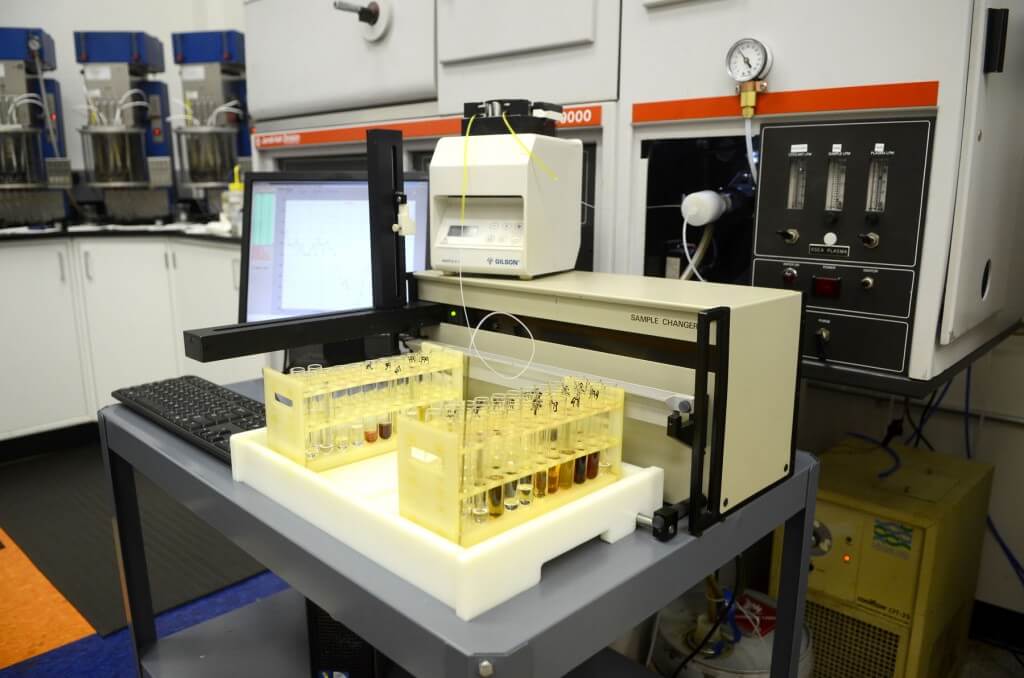Elemental Spectroscopy
The Elemental Spectroscopy test uses a spectrometer to measure the levels of specific chemical elements present in an oil. Two types of spectrometers are commonly used. Arc emission spectrometers apply energy in the form of an electric arc to the sample. This excites the atoms into vapor form, creating a spectrum where light is generated. Individual light frequencies in the spectrum are measured and quantified to determine the presence and quantities of specific elements present. The other common type of spectrometer is the ICP (inductively coupled plasma) spectrometer. This operates on a similar principle, except that the energy is applied to the sample by a plasma flame rather than an electric arc. Spectroscopy is not able to measure solid particles larger then roughly 7 μm, which leaves this test blind to larger solid particles.
Operating Principle
An oil sample is mixed first with a solvent and then with argon gas to form a fine mist. This mist is introduced into a plasma flame. Elemental metals present in the sample will emit energy in the form of light when introduced to the plasma. Each element emits light at known wavelengths. By measuring the intensity of the light emitted at these known wavelengths the calibrated instrument can determine the concentration in ppm for the metallic elements present in the sample. ASTM method - D5185
Significance
Monitoring the concentration of metallic elements can provide important information regarding machine and lubricant condition. By monitoring wear metals such as iron, copper, tin and lead rates of wear can be observed and abnormal wear modes can be detected. Many contaminants have metallic components which can be monitored as well. Increases in contaminant metals such as silicon, aluminum and potassium can indicate ingression of dirt, coolant or process contaminants. Some additives also have metallic components. Monitoring additive metals can help indicate when a system has been topped off with the incorrect lubricant.
Applications
This test can be performed on industrial and automotive lubricants. Water based lubricants require special handling and are tested twice per week.


